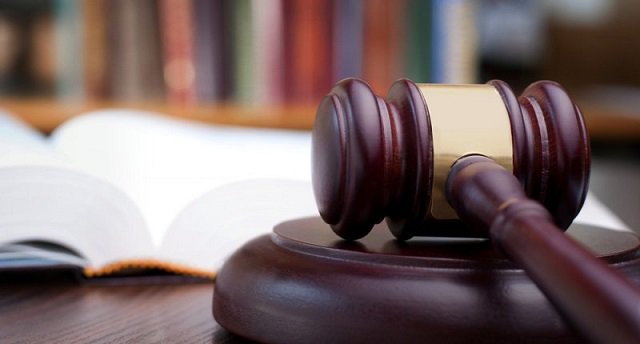
It is debatable whether all judges will be unanimous in structuring the chief justice’s discretionary powers in initiating public interest litigation. A full court meeting was held on February 6, but there is no official confirmation whether the judges even discussed the issue or not, let alone any possible path they will follow.
It has also been learned that no SC official was present during the two-hour full court meeting. Since taking oath as CJP, Justice Khosa has neither taken up any suo motu notice nor entertained any constitutional petition.
Senior lawyers believe that there will be a challenge for CJP, who is retiring in December, to evolve a consensus among SC judges to regulate suo motu powers by amending Supreme Court rules.
In the 11 years since the Lawyers’ Movement, both judicial activism and judicial restraint have been put on display by different top judges.
In 2009, the superior judiciary led by former CJP Iftikhar Muhammad Chaudhry initiated public interest litigation regarding the enforcement of fundamental rights. Later, ex-CJP Saqib Nisar further reinforced the approach of judicial activism.
However, former chief justices Tassaduq Hussain Jilani, Nasirul Mulk, and Anwar Zaheer Jamali had sparingly used suo motu power during their tenures.
Future chief justices’ approach
Both senior-most judges Justice Gulzar Ahmad and Justice Sheikh Azmat Saeed were part of the bench led by former chief justice Iftikhar Muhammad Chaudhry, which heard several public interest matters.
Justice Gulzar, who is next in line to become CJP and will hold the post for over two years, has already initiated proceedings of public interest litigation regarding the removal of encroachments from Karachi city.
Likewise, Justice Sheikh Azmat has authored two rulings, wherein the jurisdiction of quo warranto (questioning right to power) to examine the qualification of lawmakers under Article 62 (1) (f) of the constitution has been extended last year. Likewise, he also endorsed the formation of a Joint Investigation Team (JIT) to probe the Panama Papers case. Likewise, he does not spare executive authorities regarding the enforcement of fundamental rights in the country. However, Justice Sheikh is retiring in August.
After analysing past judgments, it can be said that future chief justices have also varying approaches to public interest litigation.
Justice Umar Ata Bandial, who is also a future chief justice, has remained part of the bench led by former chief justice Saqib Nisar, wherein numerous of suo motu proceedings were initiated in different public interest matters. Likewise, he remained part of the bench which exercised quo warranto jurisdiction to examine the eligibility of lawmakers. Recently, he authored judgment to justify the lifetime disqualification of lawmakers under Article 62 (1) (f) of the constitution. Justice Bandial had also authored the Rae Hassan Nawaz verdict, wherein a lawmaker was disqualified for non-disclosure of assets on his nomination papers.
Though Justice Qazi Faez Isa objected to the manner in which public interest jurisdiction was exercised by former chief justice Saqib Nisar, he justified suo motu jurisdiction in the Faizabad dharna case. In the Sheikh Rasheed eligibility case, Justice Isa also raised questions over the exercise of quo warrant jurisdiction, as well as the applicability of Article 62 (1) (f) to examine the qualifications of parliamentarians. The judge in the same case had also recommended a larger bench to adjudicate those legal questions, but Justice Sheikh Azmat and Justice Sajjad Ali Shah did not agree with him.
However, it is fact that Justice Isa is among the few judges who voted for the annulment of the 21st Amendment, which legalized the trial of civilians in military courts.
Justice Ijazul Ahsan, who would follow Justice Isa as CJP, was also part of the Saqib Nisar bench. The Justice Ahsan authored several verdicts in public interest matters including the fake accounts case, and reduction of school fees case. former CJP Nisar had also appointed him as the monitoring judge in the Panama Papers case.
Another future chief justice, Mansoor Ali Shah, remained active while chief justice of the Lahore High Court. However, his focus was remained to bring reforms in the judicial system. Senior lawyers were divided over what his approach would be in public interest matters.
Justice Muneeb Akhtar, who will be next CJP after Justice Shah’s retirement, is known as a by-the-book judge. However, he did author the order in the loan write-offs case last year. Likewise, Justice Akhtar was also part of the four-judge bench which conducted proceedings regarding the construction of dams in the country.
Finally, Justice Yahya Afridi, the youngest judge on the bench, would become CJP in 2028. He recused himself from hearing a few public interest cases last year.
In the prevailing situation, it will be a challenge for CJP Khosa to structure suo motu powers by amending Supreme Court rules, which can only be done by a full court.
It is also noted that instead of hearing it himself, CJP Khosa has fixed the implementation of the Asghar Khan case verdict with a three-judge bench led by Justice Gulzar Ahmad and comprising Justice Faisal Arab and Justice Ijazul Ahsan. Two of them were part of the previous bench led by former CJP Nisar. Most public interest cases are being fixed before Justice Gulzar and Justice Azmat-led benches since ex-CJP Nisar’s retirement
Legal opinion on suo motu powers
Former additional attorney general Waqar Rana told The Express Tribune that the apex court has gained and exercised a constitutional power to protect human rights in overall political scenario of Pakistan, adding that it is essential that this power should be kept intact but it should be sparingly so that balance of power among the three branches of government – executive, legislative and judiciary – remains intact.
Pakistan Bar Council executive member Raheel Kamran Sheikh says that the Supreme Court while assuming jurisdiction and exercising powers under Article 184(3) in every case, should consider as to which fundamental right is involved.
He also said the manner in which Article 184 (3) has been used in the last one decade provides ample evidence that it is a vital source of empowerment of the court vis-à-vis other organs of the state and particularly the chief justice.
“It is historically also established that such a power has been exercised and used to substantially undermine the doctrine of dichotomy of powers and for intrusion in the affairs of other organs of the state, particularly the executive, for the judicialisation of politics and used as an alternative to the writ of quo warranto, an exercise for control of those who could question the court of its own performance, such as the media, and for popularity derived by taking suo moto notice of matters involving high media value.”
Sheikh said the power under Article 184(3) is vested in the court and not any particular judge or the CJP. At the same time, hearings in most cases under Article 184(3) have been conducted by benches headed and constituted by the CJP, meaning thereby that the views of a CJP virtually dominate interpretation vis-à-vis the nature, scope, and limits of the fundamental right subject matter of the proceedings.
“Although these are quite capable of diverse interpretations and what should prevail is consensus or majority view of the court in such matters of public importance, the manner and the extent to which parties will be heard are entirely arbitrary and dependent upon the temperament of an incumbent CJP heading the bench,” he said.
He underscored that this is a matter of particular significance and concern as the right to a fair trial is a fundamental right guaranteed by the Constitution under Article 10A, and there is no right of appeal provided against any order, judgment or decision under Article 184(3).




1731916090-0/sabrina-(3)1731916090-0-165x106.webp)












COMMENTS
Comments are moderated and generally will be posted if they are on-topic and not abusive.
For more information, please see our Comments FAQ